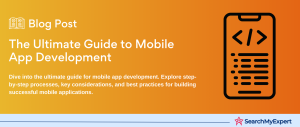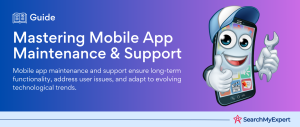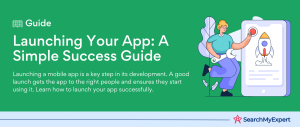What are Push Notifications?
Push notifications are short messages that pop up on your computer, phone, or tablet. Think of them like mini alerts or reminders from an app or website. They can show texts, pictures, or even buttons that you can click on.
Where Did Push Notifications Start?
Push notifications were first made by a company called “Danger” in 2008. The next year, Apple started using them on their devices, like iPhones and iPads.
Types of Push Notifications
There are two main types:
- Web-based: These come from websites and can show up on your computer or phone. Web-based Notifications: Known as “web-push” notifications, these alerts can surface on both desktops and mobile devices. Regardless of the specific browser or operating system, any website can dispatch a web-based notification..
- App-based: These come from apps on your device, like a game or news app.App-based Notifications: Generally perceived as the standard push notification, these alerts are crafted within apps. For the user to receive them, an initial opt-in is typically necessary. Such notifications predominantly appear on mobile devices, enhancing in-app user engagement or urging the user to perform a particular action
Push Notification Utilization
Push notifications function as a dynamic channel to augment communication. Their application varies :
- Marketing: Push notifications in marketing spheres can bolster sales, customer loyalty, and provide invaluable data for sharper marketing insights. When implemented strategically, they can lure customers back to abandoned carts or re-engage dormant customers.
- Civic Communication: Over recent times, utility push notifications have garnered substantial traction. Local administrations and utility bodies harness push notifications to issue crucial alerts, including weather warnings, traffic updates, and local governance announcements.
- Security Authentication: Push notifications also double up as security tools. Websites and applications housing sensitive data, like those related to banking or healthcare, employ push notifications for identity verification.
Benefits of Push Notifications
For companies, push notifications are useful because:
- More people see them compared to emails.
- They can send messages instantly.
- They can remind users about something or encourage them to take an action, like buying a product.
For us, the users, these notifications let us get important information quickly, right on our screens.
How Do Push Notifications Work?
Here’s a simple explanation: An app or website sends a message to a special server. This server then sends the message to your device, making it pop up on your screen.
Different Kinds of Push Notifications
There are many kinds, including:
- Reminders: Like when you leave something in your online shopping cart.
- Updates: News or updates from a brand or company.
- Deals: Special offers or discounts.
- Security Checks: Messages that help keep your accounts safe.
How to Manage Push Notifications
Managing push notifications is essential so that you’re only alerted about the things that matter to you. Here’s how you can take control:
1. Turning Them On or Off:
Every app or website will ask for your permission before sending you notifications. You can choose to allow or decline. If you change your mind later:
- On Mobile: Go to the settings, find ‘Notifications’, and select the app. Here, you can turn notifications on or off.
- On Desktop: In your browser settings, look for ‘Privacy & Security’ or ‘Site Settings’. You can manage notifications for different websites here.
2. Customize Notification Type:
Some app developers let you pick what kind of alerts you want. For example, a news app might let you choose to get breaking news alerts but not daily summaries.
3. Prioritize Notifications:
If you have many apps, it’s helpful to prioritize. You can set some notifications as high priority to appear at the top or mark others as silent, so they don’t make a sound.
4. Limiting Number of Notifications:
Some apps offer a ‘Downtime’ or ‘Do Not Disturb’ feature. This means you won’t get notifications during specific hours, like when you’re sleeping.
The Future of Push Notifications
As technology advances, push notifications are becoming smarter and more user-friendly. Here’s what to expect:
- Personalization: Apps will use data to send you notifications that are even more relevant and tailored to your preferences.
- Interactive Notifications: Instead of just text or images, future notifications might include mini-games, polls, or interactive surveys.
- Location-Based Alerts: Imagine walking past a coffee shop and getting a notification for a discount because they know you love lattes!
Things to Remember
- Privacy Matters: Always be aware of what permissions you’re giving to an app or website. If they don’t need to send you notifications, it’s okay to say no.
- Avoid Notification Fatigue: If you’re getting too many alerts, it’s a good idea to review and declutter. Remember, it’s about quality, not quantity.
- Stay Updated: App developers often update notification settings and features. Check them regularly to ensure you’re getting the best experience.
Best Practices for Push Notifications
If you’re a business or content creator planning to use push notifications, it’s crucial to ensure they are effective and not intrusive. Here are some best practices to consider:
1. Timing is Everything:
Send notifications at times when users are most likely to engage. For instance, sending retail offers during lunch hours or in the evening can yield better results than early morning.
2. Segmentation:
Group your audience based on their behavior, interests, or demographics. Tailor your notifications to each group to make them more relevant.
3. Less is More:
Avoid overwhelming users with too many notifications. It’s essential to strike a balance between staying in touch and becoming spammy.
4. Use Clear and Concise Language:
Your message space is limited. Ensure that the text is clear, concise, and compelling.
5. Optimize for All Devices:
Ensure that your notifications look good and are functional on all devices, from smartphones to tablets to desktops.
6. Test and Adapt:
Regularly review the performance of your notifications. Analyze click-through rates and user feedback to refine your strategy.
7. Give Control to the Users:
Allow users to choose the kind of notifications they want to receive. Providing customization options can increase engagement and reduce opt-out rates.
Challenges with Push Notifications
While push notifications offer numerous advantages, they come with their set of challenges:
- Platform Restrictions: Different platforms have distinct guidelines and limitations for push notifications, which can affect uniformity.
- Diverse User Preferences: Catering to a broad audience with varied preferences can be challenging.
- Risk of Over-communication: Sending too many notifications can lead to users muting them or, worse, uninstalling the app.
Key Takeaways for Users
For end-users, while push notifications can be informative and beneficial, it’s crucial to:
- Stay in Charge: Regularly review app and website permissions, ensuring you’re only receiving notifications you find valuable.
- Prioritize: Utilize device and app settings to prioritize essential notifications, so you don’t miss out on crucial information.
- Feedback: If a particular app’s notifications become too frequent or irrelevant, provide feedback. Most developers appreciate user insights as they help improve the user experience.
Conclusion
Push notifications, when used judiciously, can be a valuable tool for both businesses and users. Businesses can communicate effectively, while users can stay updated with relevant information. The key lies in understanding the audience, respecting their preferences, and continuously adapting to the ever-evolving digital landscape.
Stay ahead of the app curve with these leading App Development Companies.
Further Reading
- AR VR App Development
- Integrating Payment Gateways In Mobile Apps
- Mastering Messaging App Development
- Geolocation App Developement
- In-App Purchases
- User Authentication
- Social Media Integration App Development
- Multilingual Mobile App Creation
- Offline Mobile App Development
Table of Contents
Toggle






